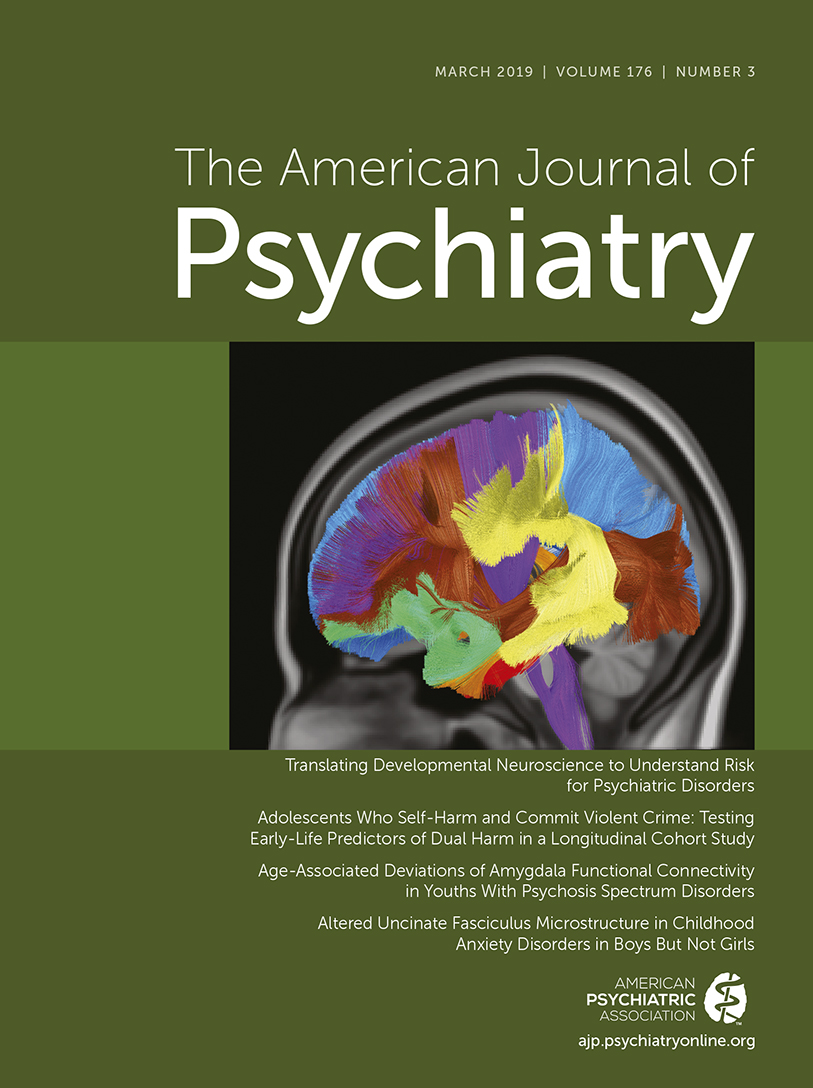Target Population, Dose, and Timing Considerations for Understanding Naltrexone’s Subjective Effect: Response to Amiaz
Tothe Editor: We thank Dr. Amiaz for the interest in our study and appreciate the comments on the effects of naltrexone in various populations of patients with depressive symptomatology. Dr. Amiaz cites several examples of naltrexone’s variable effect on mood to support the concern that the absence of a naltrexone-only group in our study may confound the interpretation of our results. We agree that patients with substance abuse disorders or histories thereof, as well as other major psychiatric conditions, such as obsessive-compulsive disorder (OCD), may have substantially varied responses to naltrexone. We specifically excluded patients with these comorbid disorders from our study, focusing on patients primarily diagnosed with treatment-resistant depression.
Among the examples to which Dr. Amiaz refers, the most compelling argument for a depressive effect of naltrexone comes from studies of patients with opioid use disorder (1, 2). It is perhaps unsurprising that giving an opioid antagonist to patients with histories of opioid use disorder could trigger dysphoria, although even on this point clinical data are mixed (3). We would point out that the referenced studies do not support Dr. Amiaz’s conclusion that selective serotonin reuptake inhibitors (SSRIs) “had no additional effect” on alcohol-abstinent depressed patients taking naltrexone. Kranzler and colleagues (4) excluded patients receiving naltrexone therapy and did not administer naltrexone in their trial. Adamson and colleagues (5) did not require patients to be abstinent from alcohol and initiated patients simultaneously on naltrexone plus placebo or naltrexone plus SSRI therapy; remarkably, both naltrexone and the combination improved depression scores, thereby suggesting that naltrexone may in fact have a superior antidepressant effect compared with citalopram in this population. Another sizable study of combination therapy (6) in alcohol-abstinent depressed patients found that naltrexone alone appeared to be mood neutral, whereas combination therapy improved both abstinence and depression scale outcomes above either treatment alone. Naltrexone did not appear to block the effects of an SSRI in this case. As Dr. Amiaz points out, opioid blockade may worsen mood in patients with OCD (7). These examples may suggest that the variable response to pharmacological challenge could give us a more objective tool to categorize clinical pathology.
There are other difficulties applying the results of other trials using naltrexone to the interpretation of our results. First and foremost, dosing matters. A human nuclear imaging study supports our use of 50 mg of naltrexone to saturate opioid receptors (8). In contrast, the effects of low-dose naltrexone may not even involve opioid receptors, as some have argued that low-dose naltrexone has anti-inflammatory properties via the toll-like receptor 4 (9). Moreover, studies using depot forms of naltrexone achieve substantially lower peak blood levels of naltrexone and its active metabolite, β-naltrexol, compared with oral naltrexone (10). There is some debate regarding the minimal plasma naltrexone levels required to block the subjective effect of intravenous heroin (10–13). However, we readily acknowledge that our observed block of ketamine’s antidepressant effect by naltrexone could be mediated by a direct action at an opioid receptor or via release of endogenous opioids. It is unknown what blood level of naltrexone is sufficient to block the effect of endogenous opioid release, but we would err toward higher blood levels when designing a study of antidepressant mechanism.
We wholeheartedly agree that further clinical investigation of ketamine’s interaction with the opioid system is needed, and our understanding of how, when, and in whom naltrexone affects mood is worth exploring further.
1 : Accounting for the uncounted: physical and affective distress in individuals dropping out of oral naltrexone treatment for opioid use disorder. Drug Alcohol Depend 2018; 192:264–270Crossref, Medline, Google Scholar
2 : Does naltrexone treatment lead to depression? Findings from a randomized controlled trial in subjects with opioid dependence. J Psychiatry Neurosci 2006; 31:38–45Medline, Google Scholar
3 : Anhedonia, depression, anxiety, and craving in opiate dependent patients stabilized on oral naltrexone or an extended release naltrexone implant. Am J Drug Alcohol Abuse 2016; 42:614–620Crossref, Medline, Google Scholar
4 : Sertraline treatment of co-occurring alcohol dependence and major depression. J Clin Psychopharmacol 2006; 26:13–20Crossref, Medline, Google Scholar
5 : A randomized trial of combined citalopram and naltrexone for nonabstinent outpatients with co-occurring alcohol dependence and major depression. J Clin Psychopharmacol 2015; 35:143–149Crossref, Medline, Google Scholar
6 : A double-blind, placebo-controlled trial combining sertraline and naltrexone for treating co-occurring depression and alcohol dependence. Am J Psychiatry 2010; 167:668–675Link, Google Scholar
7 : Naltrexone augmentation in OCD: a double-blind placebo-controlled cross-over study. Eur Neuropsychopharmacol 2008; 18:455–461Crossref, Medline, Google Scholar
8 : Duration of occupancy of opiate receptors by naltrexone. J Nucl Med 1988; 29:1207–1211Medline, Google Scholar
9 : The role of neuroimmune signaling in alcoholism. Neuropharmacology 2017; 122:56–73Crossref, Medline, Google Scholar
10 : Single- and multiple-dose pharmacokinetics of long-acting injectable naltrexone. Alcohol Clin Exp Res 2006; 30:480–490Crossref, Medline, Google Scholar
11 : Depot naltrexone: long-lasting antagonism of the effects of heroin in humans. Psychopharmacology (Berl) 2002; 159:351–360Crossref, Medline, Google Scholar
12 : Naltrexone: disposition, metabolism, and effects after acute and chronic dosing. Clin Pharmacol Ther 1976; 20:315–328Crossref, Medline, Google Scholar
13 : Long-acting depot formulations of naltrexone for heroin dependence: a review. Curr Opin Psychiatry 2010; 23:210–214Crossref, Medline, Google Scholar



